Docks & Dockyards in 18th Century London
by Regan Walker
In doing the research for my new Georgian romance, To Tame the Wind, one of the things I had to figure out was where and how the hero, Capt. Simon Powell, would dock his ship, the Fairwinds, when he sailed into London. When I began, I had no idea he couldn’t just slide alongside a dock. Oh, no, in the late 18th century on the River Thames, it was a complicated affair to bring a ship into London.
London’s port was originally centered on the Pool of London, the area just downstream from London Bridge. All imported cargoes had to be delivered to the quaysides on the north bank of the river for inspection and assessment by customs officials. The area thus became known as “the legal quays.” Ships tied up to wharves, mooring posts and to each other. But there were no docks, a situation that persisted until the early 19th century. Instead, cargoes often had to be ferried to the quay in small boats or carried from a where the ship was tied up at a mooring.
To define our essential terms, a “dock” is a structure extending alongshore or out from the shore into a body of water (in this case a river), to which boats may be moored (or attached to shore). It can also be an enclosed area of water in a port for the loading, unloading, and repair of ships (which was its earlier meaning in London). And “docks” is defined as a group of enclosed areas of water along with associated wharves and buildings. A shipyard or “dockyard” is a place where ships are repaired or built and they typically contain docks.
Got that? Good.
In the 18th century, thousands of sailing ships entered London’s port each year, bringing coal or grain to the capital. These ships had to compete for space in the crowded Thames with vessels carrying goods like sugar and rum from the West Indies, tea and spices from the East Indies, wine from the Mediterranean, furs, timber and hemp from Russia and the Baltic and tobacco from America.
Between 1700 and 1770, the commerce of the Port nearly doubled and from 1770 to 1795, it doubled again. In 1792, London’s share of all imports and exports was nearly 65 per cent. Ships could wait as much as three months to unload. In the busiest seasons, a ship could only be taken up or down the river with great difficulty because of the number of vessels clogging the river and tied up at moorings. Hence, in To Tame the Wind, Capt. Powell is admired by all for his skill in adroitly navigating the Thames.
This heavy congestion resulted in damage to goods and ships, theft and delays. The legal quays became so crowded that three-fourths of the imports and exports had to be managed by water or “sufferance wharfs.” Merchants complained loudly about the effect this had on their costs and profits, and in the 1790s the highly profitable West Indies merchants began to campaign for better port facilities.
In 1793, William Vaughan, a naval architect, trader and director of the Royal Exchange Assurance Corporation, published a paper, On Wet Docks, Quays, and Warehouses, for the Port of London; with hints respecting trade. Vaughan made the case that what was needed was the addition of docks, quays and more warehouses to accommodate the increased traffic.
With favorable reference to the docks at Liverpool, Hull and Bristol, he noted, “London, though the first city of commerce, … has been the last, except in the case of two spirited individuals, to try the experiment.” The two exceptions Vaughan cited were Mr. Perry’s dock at the Blackwall Yard (which, after 1810, became known as Green’s yard), and Mr. Wells dock at Greenland.”
These weren’t the kind of docks you might think of. For example, the Greenland Dock was in a rural setting some miles outside London, lined with trees on three sides (to act as windbreaks). Unlike the docks that were to come later, it was not built with cargo traffic in mind. It did not have walls, warehouses or other commercial facilities. Instead, it was promoted as accommodating ships “without the trouble of shifting, mooring or unmooring any in the dock for taking in or out any other.” The others began as shipyards or dockyards.
What London needed—what Vaughan argued for—was wet docks, or artificial basins, for large ships, complete with “wharfs, warehouses and accommodations on the most extensive scale for the reception of vessels of three hundred and four hundred tons to discharge their cargoes with safety and dispatch without aid of lighters and craft.”
And that is just what London got. Well, sort of.
The largest pressure for new docks came from the West Indies trade in sugar, rum and coffee. Thus, in 1799 the West India Dock Act (or, The Act for Rendering more Commodious and for Better Regulating the Port of London) was passed that would lead to the building of the West India Docks.
The initial plan was for a new dock at Wapping, but this would have meant pulling down over 1,000 houses before the dock could be built. Further downstream, at the north end of the Isle of Dogs, the river was deeper and the land unoccupied. For this and other reasons, in July 1800, excavations began on the Isle of Dogs for the new dock. Huge warehouses were built for cargoes from the West Indies, the West India Dock Company providing security.
Following the successful creation of the West India Docks, which opened in 1802, Parliament passed an act setting up The East India Dock Company, promoted by the East India Company, of course. The docks were located to the northeast of the West India Docks. They were based on the existing Brunswick Dock, which had been used for fitting out and repairing ships as part of Blackwall Yard.
So you can see that setting a romance at least in part on a schooner of the period that sails in and out of London involves a lot more that you might think at first!
“A sea adventure like no other, a riveting romance!”
–Shirlee Busbee, NY Times Bestselling Author
Paris 1782…AN INNOCENT IS TAKEN
All Claire Donet knew was the world inside the convent walls in Saint-Denis. She had no idea her beloved papa was a pirate. But when he seized Simon Powell’s schooner, the English privateer decided to take the one thing his enemy held most dear… her.
A BATTLE IS JOINED
The waters between France and England roil with the clashes of Claire’s father and her captor as the last year of the American Revolution rages on the sea, spies lurk in Paris and Claire’s passion for the English captain rises.

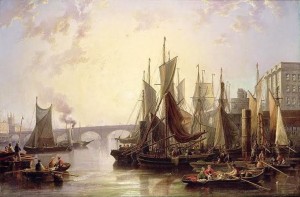
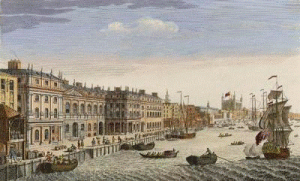
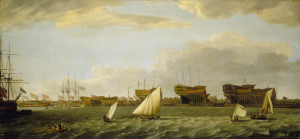
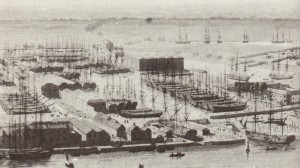
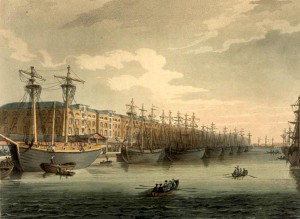
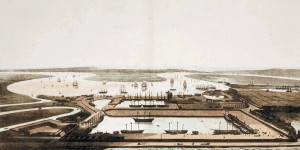








Hi, Collette. Thanks for having me and my dockyards on your blog. Looking forward to meeting some of your blog followers.
You are welcome!! I loved the article.
This is absolutely fascinating, Regan. I did not know any of this, so I want to thank you for the information. It raises all kinds of intriguing plot possibilities, so I’m tucking it away for future reference.
This was a great post Regan. It’s always interesting to learn new things.
Fascinating! Love it!
I love learning about history!
This is so interesting, Regan! I’d heard that docking in London during this period was a very tricky affair, and you’ve explained some of the reasons why. Thanks for sharing!
What a great post, Regan! I had no idea about the history of London’s harbor. Can’t imagine navigating the busy port amidst the hubbub of ships competing for space in the Thames. Thank you for sharing!
My family name is Bond, there is an old etching in the family of Bond Wharf, have never been able to find this, the family in London, and went to the City of London School, in the 1800s. There was also some connection to Sunlight Soap.
Is there any record of a John James Bond to do with this area, no one left in the family to ask. Many thanks
I am sorry, but I have no idea. I gathered the information for this post from the Internet.